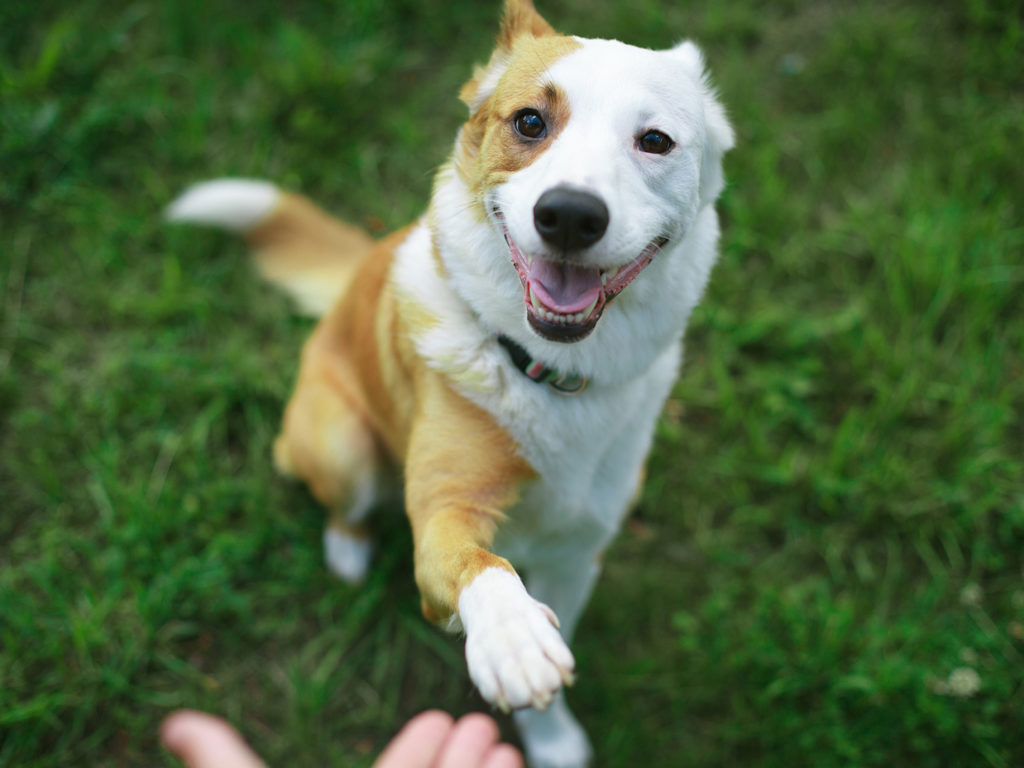Polishing Up On Animal Nail Care

While getting a manicure or pedicure is often seen as a luxury for people, proper nail care is a necessity for dogs and cats.
Regular nail maintenance in companion animals is important for a multitude of reasons, including your pet’s overall health. If a pet’s nails become overgrown, everyday activities such as walking or running can become extremely painful.
Nail trims can be a daunting activity for both owners and pets, but according to Harmony Peraza, a veterinary technician at the Texas A&M College of Veterinary Medicine & Biomedical Sciences, there are several ways to help make this task easier.
“Getting an animal used to nail trimming early in life and keeping them on a regular trimming schedule can greatly increase their acceptance of the task,” Peraza said. “An adequate trimming schedule for pets varies on how active the animal is and what surfaces their nails are exposed to— a dog that runs on concrete may naturally have shorter nails than one that typically walks on carpet.
“But trimming every six to eight weeks is good practice,” she said.
Peraza recommends that owners introduce the process of nail trimming in a series of steps to help reduce pets’ anxiety.
“First, gently handle the pet’s feet and then move on to letting the pet smell and investigate the trimming tool,” Peraza said. “Finally, begin to trim the nails one at a time, offering praise, physical petting, and treats to create a positive association.”
If a pet continues to appear anxious about this process, owners can try exercising their pet before a nail trim begins to calm them down.
During the trimming process, owners should remember that dogs and cats have what is called a “quick” in the middle of their nails. This internal blood supply contains little nerve endings, and, if nails are not regularly trimmed, the quicks can overgrow, causing severe pain when standing or walking and potentially leading to an injured foot tendon.
A pet’s nails should be trimmed at an angle to follow the natural slant of the nail growth, which is roughly the angle that the nail and quick grow at. On average, the end of the nail should reach no further than halfway down the front of the paw pad.
One thing that can support the process is using a nail trimmer that is made for animal use and is the appropriate claw size. Peraza recommends options like scissor clippers, guillotine clippers, and grinding trimmers.
Owners who are comfortable with and knowledgeable about the nail-trimming process are perfectly capable of trimming their pet’s nails at home. However, if an owner is unsure, it would be best to talk with a groomer or veterinary professional about the proper method.
Nail care may be an easy grooming step to overlook, but it is vital to keeping our pets running and walking with the same free spirit they always have.
Pet Talk is a service of the College of Veterinary Medicine & Biomedical Sciences, Texas A&M University. Stories can be viewed on the web at vetmed.tamu.edu/news/pet-talk. Suggestions for future topics may be directed to editor@cvm.tamu.edu.


